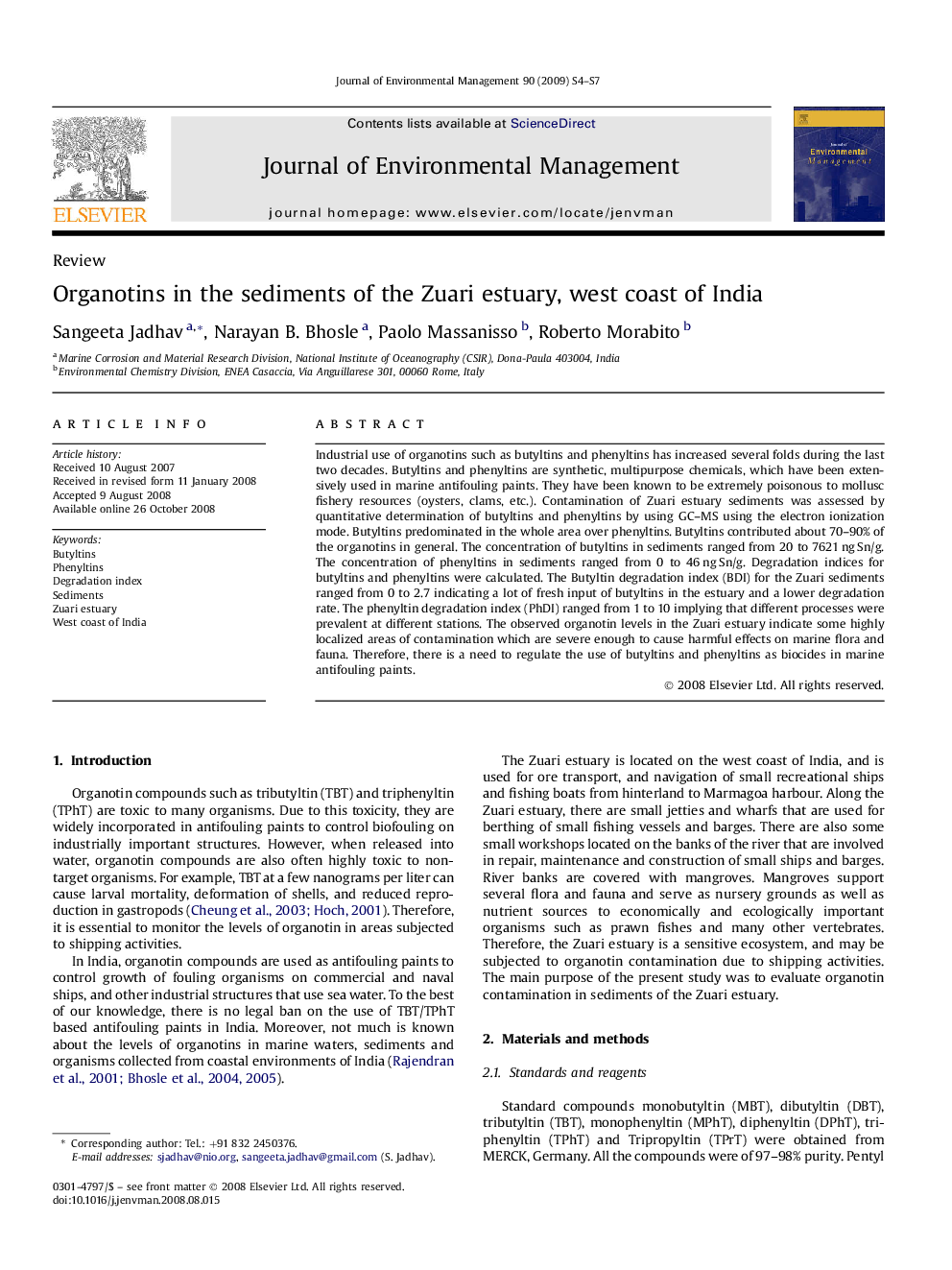| Article ID | Journal | Published Year | Pages | File Type |
|---|---|---|---|---|
| 1058534 | Journal of Environmental Management | 2009 | 4 Pages |
Industrial use of organotins such as butyltins and phenyltins has increased several folds during the last two decades. Butyltins and phenyltins are synthetic, multipurpose chemicals, which have been extensively used in marine antifouling paints. They have been known to be extremely poisonous to mollusc fishery resources (oysters, clams, etc.). Contamination of Zuari estuary sediments was assessed by quantitative determination of butyltins and phenyltins by using GC–MS using the electron ionization mode. Butyltins predominated in the whole area over phenyltins. Butyltins contributed about 70–90% of the organotins in general. The concentration of butyltins in sediments ranged from 20 to 7621 ng Sn/g. The concentration of phenyltins in sediments ranged from 0 to 46 ng Sn/g. Degradation indices for butyltins and phenyltins were calculated. The Butyltin degradation index (BDI) for the Zuari sediments ranged from 0 to 2.7 indicating a lot of fresh input of butyltins in the estuary and a lower degradation rate. The phenyltin degradation index (PhDI) ranged from 1 to 10 implying that different processes were prevalent at different stations. The observed organotin levels in the Zuari estuary indicate some highly localized areas of contamination which are severe enough to cause harmful effects on marine flora and fauna. Therefore, there is a need to regulate the use of butyltins and phenyltins as biocides in marine antifouling paints.
